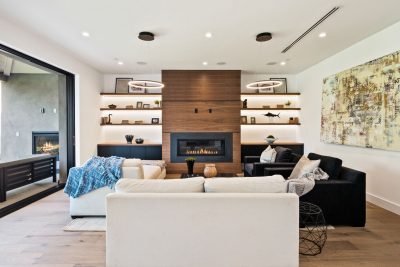
Bathroom Remodel for Seniors
September 14, 2023
Bathroom Remodel for Seniors
Bathroom remodel for seniors often focus on increasing safety, accessibility, and convenience. As people age, mobility and physical capabilities may change, making the standard bathroom features less accommodating or even hazardous.
Whether you’re in Brentwood, Beverly Hills, Calabasas, Santa Monica, Sherman Oaks, Woodland Hills, or anywhere in between. These tips will help you consider what you need to do before your next remodel. Below, we’ll explore essential considerations for remodeling a bathroom for seniors, offering both practical advice and creative ideas.
Understanding Senior Needs
Assessing Specific Requirements
Understanding the specific needs of the senior or seniors who will be using the bathroom is crucial. Needs may vary based on mobility, vision, and overall health. For example, someone using a wheelchair will have different requirements than someone with arthritis. Assessing these needs initially will guide the design process.
Emphasizing Safety in a Bathroom Remodel for Seniors
Safety is paramount in a senior-friendly bathroom. This includes adding grab bars near the toilet, shower, and bathtub; using non-slip flooring; and ensuring proper lighting. Creating clear pathways and reducing trip hazards are other essential safety considerations. The goal is to minimize the risk of falls and injuries.
Balancing Functionality and Aesthetics
While functionality and safety are vital, it’s equally important to create a pleasant, aesthetically pleasing environment. A bathroom that feels clinical may be off-putting. By selecting attractive fixtures, color schemes, and materials that align with safety features, you can create a welcoming space.
Choosing the Right Fixtures
Opting for Walk-In Showers
Walk-in showers with a low or no threshold are often an excellent choice for seniors. They allow for easier entry and exit and can be equipped with a seat for comfort. Handheld showerheads provide additional flexibility. Ensure the shower area is spacious enough for movement or assisted bathing if necessary.
Selecting Appropriate Toilets
Consider installing a comfort height toilet, which is taller than standard toilets and can make sitting down and standing up easier. Adding grab bars on either side provides additional support. Some may also benefit from a bidet feature, offering improved hygiene without the need for significant reaching or twisting.
Installing Accessible Sinks and Vanities
Sinks and vanities should be at an appropriate height and allow for legroom underneath if wheelchair access is needed. Lever handles for the faucets are generally easier to manipulate than knobs. Adequate lighting and a tilting mirror can also make daily grooming tasks more manageable.
Enhancing Mobility and Accessibility
Creating Barrier-Free Access
Creating a barrier-free bathroom means minimizing obstacles that can impede movement. Widening doorways for wheelchair or walker access, creating clear floor space, and minimizing sharp edges or corners can make navigation simpler and safer.
Adding Adaptive Equipment
Installing adaptive equipment such as grab bars, shower seats, and adjustable shower heads can greatly enhance the bathroom’s usability. Many of these items can be seamlessly integrated into the bathroom’s design without detracting from its appearance.
Planning for Future Needs
It’s wise to design the bathroom with future needs in mind. Using reinforced walls that can support grab bars if needed later or planning space for potential wheelchair access ensures the bathroom remains functional as needs change.
Incorporating Smart Technology
Integrating Voice Controls
Voice-controlled technology can make many daily tasks easier for seniors, from adjusting lighting and temperature to operating the shower or radio. This hands-free control can be particularly beneficial for those with limited dexterity.
Utilizing Automated Features
Automated features such as motion-sensor faucets and lights reduce the need for physical manipulation and ensure that lights or water are never accidentally left on. These features not only add convenience but also enhance safety.
Exploring Health Monitoring
Some cutting-edge bathroom technologies include health monitoring features. Scales integrated into the floor, mirrors that can assess skin health, or even toilets that can analyze urine for health indicators may become more common and provide valuable health insights.
Selecting Appropriate Flooring and Lighting
Choosing Non-Slip Flooring
Flooring in a senior’s bathroom should be slip-resistant even when wet. Materials such as textured tile, rubber, or vinyl with a slip-resistant coating can be both attractive and safe. Avoiding transitions between different flooring types can also reduce tripping hazards.
Ensuring Adequate Lighting
Proper lighting is essential for visibility and safety. Bright, glare-free lighting should be used throughout the bathroom, with additional task lighting near the mirror and shower. Nightlights or motion-activated lights can provide safe navigation during nighttime visits.
Considering Contrast and Color
Utilizing contrasting colors for walls, floors, and fixtures can help those with vision impairment. For example, having a toilet seat that contrasts with the toilet bowl and floor can make it easier to locate. Thoughtful color choices can aid in spatial orientation.
Working with Professionals
Finding Experienced Contractors
Finding contractors with experience in senior bathroom remodeling is essential. They will understand the specific requirements and guidelines to ensure the bathroom is safe and compliant with any relevant regulations.
Collaborating on Design
Working closely with the contractor and designer to express preferences and needs will ensure that the final design is both functional and in line with the senior’s personal taste. Having regular check-ins during the remodeling process can help keep the project on track.
Understanding Costs and Funding Options
Discussing budget openly with your contractor helps manage expectations and costs. Additionally, exploring potential grants, loans, or tax deductions specifically aimed at home modifications for seniors may assist in funding the project.
Conclusion
Bathroom Remodel for Seniors is about creating a space that accommodates their unique needs without sacrificing style or comfort. By considering factors like mobility, accessibility, safety, technology, and aesthetics, you can design a bathroom that not only serves the practical needs of aging adults but also provides a space that feels welcoming and dignified. Whether remodeling for yourself, a family member, or planning for future needs, thoughtful design choices will result in a bathroom that is both functional and beautiful.


